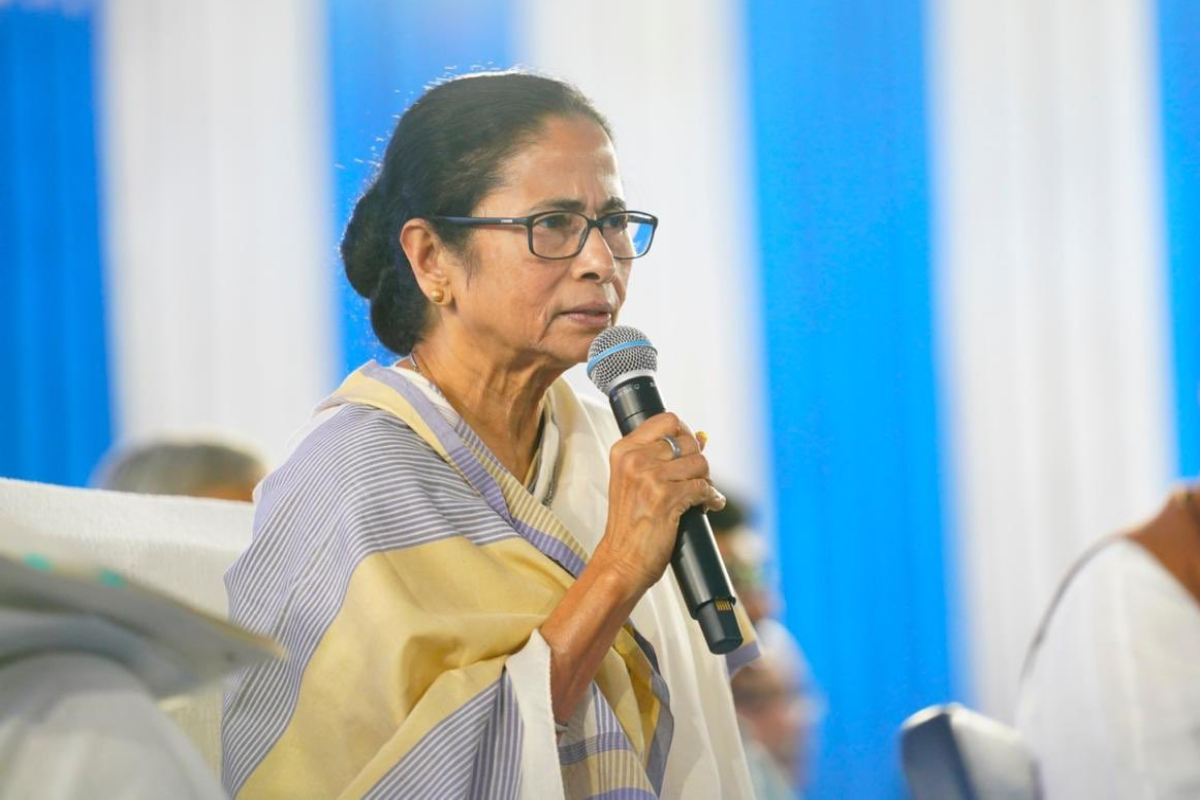During one of her election rallies as she campaigned in the northern district of Cooch Behar for next month’s rural polls, West Bengal chief minister Mamata Banerjee told the crowd that had gathered that she would never discriminate against them even though they didn’t really support her party in the past two important elections – the Parliamentary elections of 2019 and the Assembly elections of 2021. She told them that as the chief minister of the state she would always mete out equal treatment to all the people of her state, regardless of how they voted or whether they lived in the northern part of the state or the south. Cut to the campaigning that is taking place in the state’s southern districts and it is all about acknowledging the massive support that Trinamool received from the people in the same elections.
Though Banerjee has always negated the idea of making a distinction between “north” and “south”, pointing out that there is no division and that West Bengal, after all, is one state, when it comes to campaigning, she is keenly aware of the differences between the two parts. The problems are different. The issues are different. The requirements are different. The expectations are different.
Advertisement
“In the northern part of the state, there are groups of people who don’t feel that they belong to the mainstream of Bengal and want a separate state based on identity, like the Gorkhas of Darjeeling,” points out Tarun Ganguly, Bengal political expert. “There are also groups like the Koch and Rajbangshis, who feel that they have been neglected and are becoming minorities in their own indigenous land because of the problems of illegal infiltration of people from the neighboring country of Bangladesh.”
The BJP which has not unequivocally ruled out the carving out Gorkhaland from Darjeeling has kept the hope of Gorkhas alive and therefore have always done well in elections from this constituency. They have retained the Darjeeling Parliamentary seat for over two decades. The Koch and Rajbangshi groups too see BJP’s promise of sealing borders and stopping illegal infiltration as a sign that this is a party which could benefit them and meet their requirements. During the three and half decade of Communist rule, the northern part of the state had also suffered from lack of infrastructural development (landslides in the hills are common making maintenance of roads an urgent requirement which was often delayed – though the Banerjee government is better at providing administrative assistance in the hills and has even started a separate wing of the secretariat in the north to instill confidence in the people of the north).
Those tracking Trinamool’s campaign trails as West Bengal heads for the Panchayat Polls on July 8, would note the subtle differences in approach in the way that the party leaders are addressing the electorate in different parts of the state. If in the southern districts party leaders, including Abhishek Banerjee, Mamata’s nephew, the general secretary of the party’s national unit and Trinamool’s number-two, are shouting from the rooftops about the numerous “developmental”(public distribution) schemes that Trinamool has showered upon the people of the districts and villages and in the process also thanking them for their reciprocation by way of votes in the past elections, in the northern districts, the tone is more hurt but still hopeful. Mamata told the crowd that had gathered in Cooch Behar that she is confident that they would stand by her just as she is standing by them even though they did not support her in the past. Cooch Behar, of course, is one of the seven Assembly constituencies of the Alipurduar Parliamentary constituency, which voted entirely for Banerjee’s chief political rival, Bharatiya Janata Party.
In an interview to The Statesman Trinamool MP and veteran politician, Professor Saugata Roy, who had been selected, among other senior party leaders, by Banerjee to conduct campaigning on behalf of the party candidates who are contesting the rural polls, that the campaigning would fall into two broad categories. In the first, Trinamool’s performances would be highlighted and in the second BJP’s failures and failed promises would be highlighted.
Which part to highlight and where depends on the target electorate, if one can borrow a marketing jargon and apply it to the present context. In fact, political analysts would agree that “target campaigning” is a successful strategy that Trinamool is currently employing in elections. And perhaps this is one of the secrets of the success that Trinamool experienced in the state elections of 2021, when it managed to ward off a menacing BJP which was breathing down its neck with a virtually foolproof strategy with the help of the poll strategist Prashant Kishore and his marketing team.











